
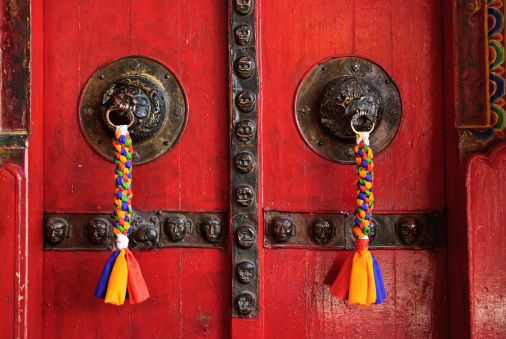
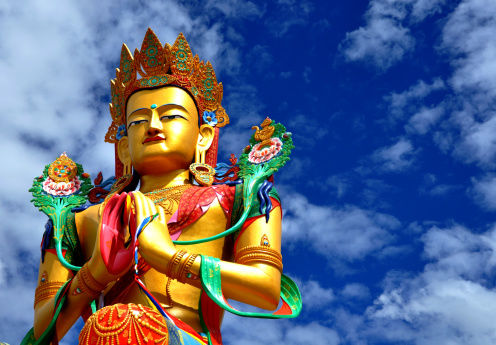
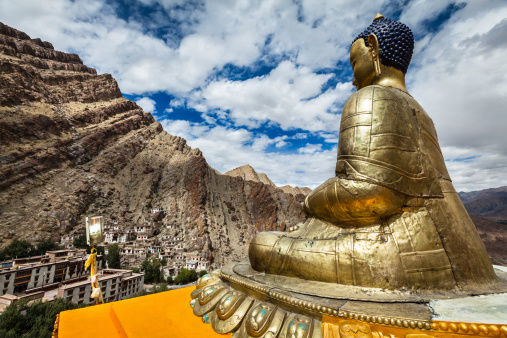


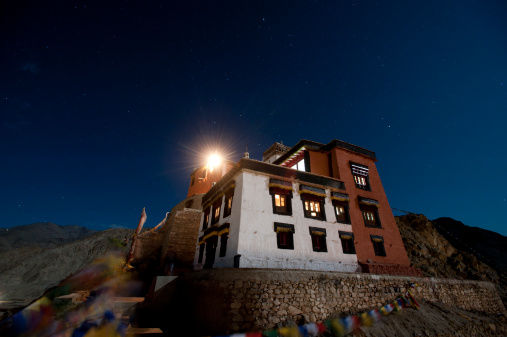

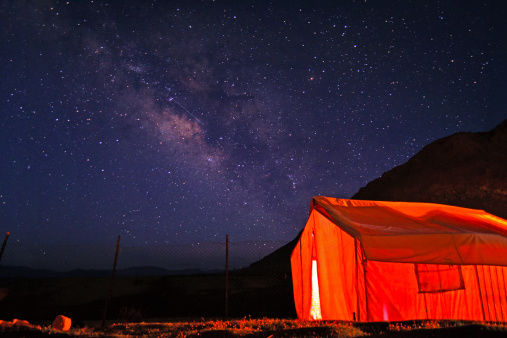
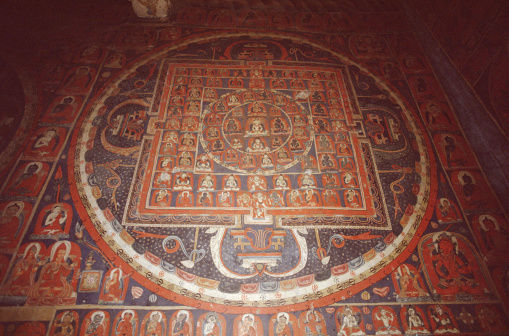

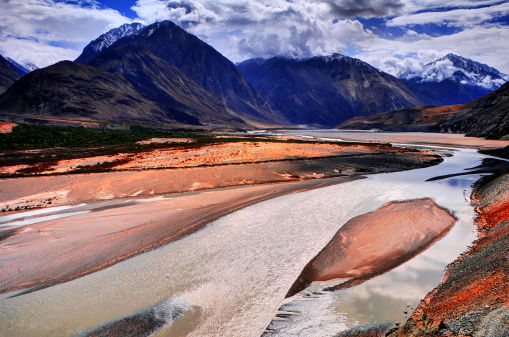

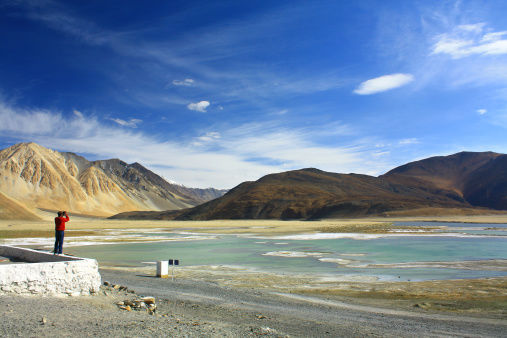


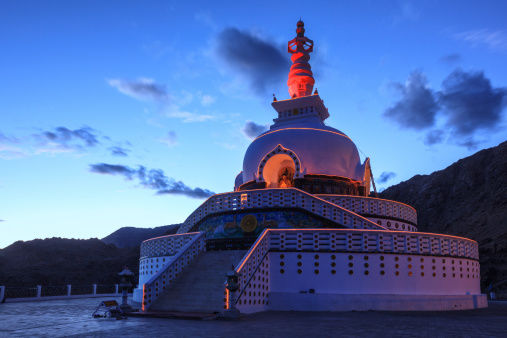

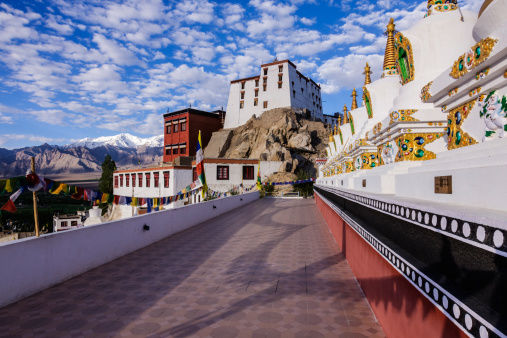
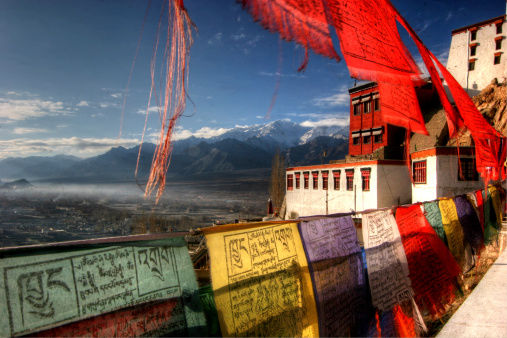


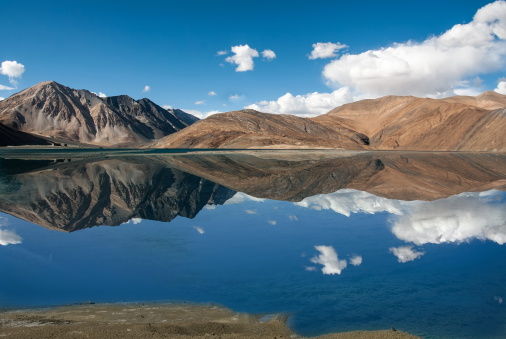
Like any other region in India, Ladakh represents a variety of complex cultural traditions. Normally called the little Tibet of India, visitors are captured by large reigning Buddhist Monasteries and exotic landscape of this cold desert.
However, there are other aspects of Ladakh that remain perennial flow of cultural traditions and are not commonly accessed.
The study tour is categorized under three themes in order to portray the multiple cultural traditions of the region:
1. Life in Cold Desert
2. Buddhist Monasteries of Ladakh: Their artistic, religious, political and social integration and influence in the region
3. Pre Buddhist traditions: The Bon traditions of Ladakh
Details of the Tour:
Day 1: Arrive in Leh, compulsory bed rest in the first half of the day followed by a light lunch and then once again rest. We will see the Japanese Stupa in the evening. Introduction to Buddhism.
Day 2: Early morning visit to Lamu the village oracle that represents the amalgamation of Buddhism and Bon cultures. After the visit to the oracle the tour we will proceed to some important monasteries in the region - Thiksey, Hemis (and a visit to the residence of his Holiness the Dalai Lama)
Day 3: Drive to the famous Nubra Valley. The Valley is accessed through the Khardong La Pass, the highest motorable pass in the world (18,300 feet) and a part of the Caravan Route between Tibet and China; a feeder route to the famous Silk Road. The valley therefore is also the natural home of the double-backed Bactrian Camel, left behind by caravans in yesteryears. We will be staying in the Hundar village for the night in a beautiful, small resort. In Hundar, we will be interacting with the villagers to understand the life in the Cold Desert. You will be required to pack an overnight bag.
Day 4: Return to Leh via Diskit where we will once again see the well known Disket Monastery, known for the Buddhist manuscripts brought from Mongolia. We return to Leh by the afternoon after which it will be relaxation time.
Day 5: Rest and then start for a unique, but most important and oldest monastery of Ladakh - Alchi. Alchi (10thc AD) was created under the supervision of Lama Rinchen Zangpo who used Kashmiri artists to create magical frescoes in a series of North Western Himalayan Monasteries between Himachal Pradesh and Ladakh. Alchi is a village structured as a flat mandala.
Day 6: Drive to the famous Pang Gong Lake near the Chinese Border (if there was heaven on earth, it is here) A full day from 6 am to 7 pm.
Day 7: Tour of Leh and free time to relax (for the second tour there will time taken out to visit the location of the prayers led by his holiness)
Day 8: Return to Delhi
In your free time, you can organize with the hotel and go shopping. Attractive things to buy include:
Yak Cheese, Thangkas, Zanskar Ethnic, Tribal Carpets, Organic tea, Apricots, Leh berry (juices, jams, pickles), Traditional Ladakhi dresses, Pure Pashmina, Chog-tse or low carved tables, Gau (charm box) studded with semi precious stones .
The program can change a little because of weather or other unforeseen circumstances.
Cost:
Single person fare without airfare for 7 days and 5 nights: USD 1400
On Twin sharing without airfare for 7 days and 5 nights: USD 2320
The prices include:
- Accommodation in Hotel Omasila, a distinct hotel run by a Ladakhi family where you are served organic food for 6 nights/ 7 days and one night in a hotel in Diskit (Nubra Valley)
- Meals breakfast, lunch, dinner
- Transport in air-conditioned Toyota Innova/Scorpio cars
- All entrance fees to the places mentioned in the itinerary
- All currently applicable taxes
- Accompaniment of Dr. Navina Jafa, Cultural Historian and Specialist in Heritage Presentation
The prices DO NOT include:
- Items of personal nature like tips, laundry, telephone calls, drinks, etc., and airfare
- Any other meals than those mentioned above.
- Camera charges at the monuments, the Inner line permit fee for non diplomats and Indians to be issued on arrival in Leh. (Rs 500)
- Any other item not specifically mentioned above is included.
Relevant information:
1. Permit information
2. Flight Information
Part1: PERMITS
All diplomats and people working with International Agencies such as the UN and World Bank need a permit. The permit form will be available in your office. The Bhutan desk in the ministry of External Affairs processes the permits. The permit is issued free of cost. It takes 4-6 weeks. Those of you who are remotely interested in the trip, please do apply, leaving it for the last moment or later will make it impossible for you to come for the trip. The following places need to be specified in the form: Leh, Nubra Valley (Diskit, Hundar), Dah-Baima, Pang Gong and Tso Moriri Lake. Please be assured that although permits always arrive, they usually arrive at the last moment and therefore your office will need to pursue the matter with the ministry.
If you are a non-diplomat Foreigner, you will need to take your visa, original passport and copies. If you are an Indian, you will need an ID.
The Diplomats will get a permit from Central Government, Bhutan Desk, Ministry of External Affairs. Please follow up after you submit the form. Do carry your original passport.
The non-Diplomats and Indians will be provided a permit in Ladakh from the District Magistrate (the fee will be charged extra at Rs. 500). The hotel owner will get us the permits.
Part 2: Suggested Flights
Tour: (Please book as soon as possible for all hotels and all flights will be booked due to the impending visit of his Holiness:
Departs Arrives
- Air India AI-445 Economy New Delhi-Leh 6:25 AM 7.50 AM
- Air India AI-446 Economy Leh-New Delhi 11:10 PM 12.30 AM
The land of high passes lies across the Zoji La pass. This is the capital of Ladakh and has now become synonymous with the ethereal beauty of the Himalayas. Once you cross into Ladakh, you are faced with a landscape that is starkly different from the otherwise green and forested mountains that populate the lower Himalayas. The landscape here on the other hand is dry, typical of the cold desert region. Since it lies in the rain shadow of the Himalayas, the land remains barren but not absent beauty. The white, gray land that is interrupted in places by crystalline, aquamarine lakes gives it an otherworldly feel. However, on the first day, one has to acclimatize to the altitude. Leh lies at 3500 meters and if you don't allow yourself to adjust you could easily come down with altitude mountain sickness. Leh, apart from its geography, is not just about mountains and lakes, it is a culturally rich area, that can afford visitors some startling glimpses not only into its own history as a space but into the history of the sub-continent too. The area has numerous stupas and monasteries that lie as testament to its own history as a place, but it is going back a fair way into the people themselves, who came and came to inhabit the area, such as the Indo-Aryan Mons, the Darads from the Western Himalayas, and nomads from Tibet that we begin to see the place as a gateway into the subcontinent that we now call India.

One of the biggest tourist attractions in Leh, the Shanti Stupa is not really that old a structure since it was built merely a couple of decades back in 1991. However, it has became popular because of the religious significance and also the mesmerizing beauty of its location.

The monastery is also popularly referred to as 'Mini Potala' of India as it bears a resemblance to the Potala Palace in Lhasa, Tibet. Its uniqueness and surrounding landscapes the monastery definitely deserve a visit. Thikse is one of the finest examples of Ladakhi architecture. This Gompa is situated on the top of the hill and forms part of Gelukpa order of Buddhism.

This monastery is the oldest one in the area belonging to the Kargyu School. The Gompa is a unique example of a monastic complex of this period, which manifests in its structure the geomantic principles which underlie religious constructions of this type. In addition, there are examples of construction techniques and details that are not found elsewhere. This place is a home for several hundreds of monks, thousands of devotees, villagers and tourists during the most memorable festival celebrated in Hemis Gompa, the largest Buddhist monastery in Ladakh.

Dizzying heights, rarefied air and brutally cold temperatures. At an elevation of 18,379 ft, Khardung La is the world's highest motorable road and serves as gateway to Shyok and Nubra valleys in Ladakh. With the Ladakh Range spreading towards the south and the Karakoram Range towards the north, the views are simply magnificent with the white snow-capped mountains peaking all around, almost at touching distance.

Nubra Valley is where the Shyok River meets the Siachan River to form a large valley separating the Ladakh and Karakoram Ranges. Known as the Orchard of Ladakh, the valley was originally called Ldumra, which meant the valley of flowers.

Beautiful but remote, Hunder village is like an oasis in the middle of the cold Nubra desert. Seven kilometers from Diskit, Nubra has acquired fame for its sand dunes, the cold desert that surrounds it, Bactrian camels and its breathtaking natural beauty.

The monastery was founded by Changzem Tserab Zangpo, a disciple of Tsong Khapa, founder of Gelugpa (Yellow Hat) sect of Tibetan Buddhism. This is the oldest and the second largest Buddhist monastery in Ladakh after Thiksey monastery. The monastery, with the support of ‘Tibet Support Group’, runs a school for the Tibetan children in the region.

Alchi Monastery or Alchi Gompa, located 70 km from Leh, is renowned as the oldest Buddhist learning center in Ladakh. Unlike the other monasteries which are constructed on high lands or hillocks, Alchi is situated on a downstream. It is one of the oldest and most well-preserved monasteries and dates back to about 1000 years; the main attraction is the thousands of miniature paintings of Lord Budha.

Surrounded by the Himalayas, Pangong Tso is like a careless drop of enchanting blue on the surreal Himalayan palette. Do not skip it on your trip to Leh.

Frequent Searches Leading To This Page:-
Budget Trip Packages for Group to Leh, Best Tour Packages for Leh, Best Travel Packages for Leh, Best Leh Trip Packages, Leh Holiday Tour Packages, Top Leh Tour Packages For Family

